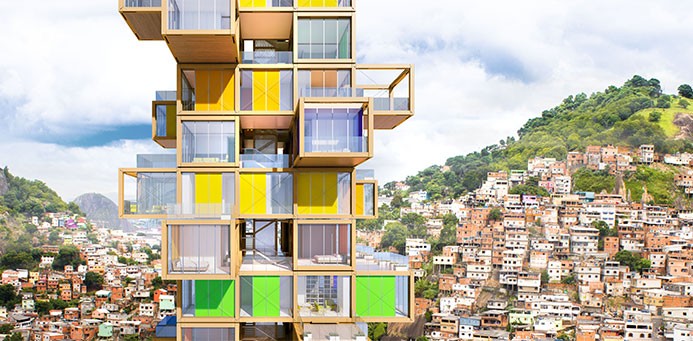
Every year, Berlin is the center for top architects
around the world to present their designs. Since 2008, Berlin in Germany
gathers top architects for the World Architectural Festival. The annual event
focuses mostly on groundbreaking international projects. There are 31
categories in which architects compete. This year, the event will take place from
November 16 to November 18. According to estimates, more than 3,000 architects
will join in. And we present five of the best finalists that aim to change the
future with their designs.
This building in China is designed by a British team of
designers. The idea is for the building to present a vertical city. The main
goal is to reduce the carbon footprint. And that can be achieved by housing
many residents in an eco-building. The 210 floor community is equipped with
work, retail, leisure, and residential accommodation.
Leveraging passive and active technologies, Osteon Cumulus is a definition of connectivity. The inhabitants own the off grid networks, further reducing the carbon footprint.
The concept of the building looks like banyan tree, with additional
branches downwards. The goal with the branches is to stabilize the load of the
structure.
Designed by Rogers Stirk Harbour, the tree house can be
built anywhere in the world. Cheap housing is a problem we face on a daily
basis, and this concept will try to solve it. The house, made up of 36 units
can provide low-cost housing that architects can build in a hurry. In the same
time, the housing can be taken apart at any time.
The self-contained and affordable accommodation is
designed mostly for young people that cannot buy an apartment. The building
eliminates the first and hardest problem on the housing ladder. Every one of
the 36 units is a 26m2 one bed studio designed for single occupancy. The
studios arrive as self-contained units with all services incorporated. This
way, owners can connect electricity and water to an existing facility. And the
best part is that units are constructed from eco-efficient materials.
For years, filling stations all around the world are
built in the same way. The same design, the same construction. There is no
evolution. But technology has advanced, and we have failed to follow suit. A
concept for a filling station in Warsaw aims to change that.
Designed by KAMJZ architects, this design can change
every gas station in the world. The main aspect of the new design is that the
station incorporates electronic charging. Electrical and hybrid cars are taking
over the world, and stations have to follow suit. This way, we can provide
place for our cars to recharge.
The futuristic design for the Congress Hall in San Jose is designed by Caza Architects. The building pays homage to the past of South America by combining nature and geometry. The end result is a tropical modernism that looks stunning, and reduces carbon footprint in the same time.
Organized around concrete hypercubes, and then enclosed
with steel slats, the goal here is to make two sections dependent parts
together. The structure takes advantage of both materials. From a political
perspective, the building makes sure that the ecological fantasy is kept alive.
The oceans, not just in Singapore, but around the world
are full with waste. And that is troubling. Spark Architects aims to change
that with huts designed from discarded plastics. The company used plastics
found among the beaches in Singapore to build the huts. Aside from discarded
plastics, every hut is equipped with a solar panel. At night, LED lights
illuminate the structures.
The goal is for visitors to enjoy the colors of the huts,
but also learn about harmful effects of ocean pollution.
The huts can be replicated anywhere in the world. And just
for info, the annual market volume of “high density polyethylene” (waste) is 30
million tons. It is important that we find a way to recycle, and these huts
provide us with the perfect opportunity.

Back in 2011, we got one of the best food documentaries. It has been six years since, and we still haven’t addressed the main issue of the documentary. Forks over knives...
Will you believe if we tell you that animals might be even better engineers than humans? We pride ourselves in being great engineers. We build some amazing buildings. We have...
We live in an era where people read fewer and fewer books. Especially children. With all this technology and advancement we have, children’s books are becoming rarity. Chil...
No, this is not a documentary about Odyssey, the Ancient Greece hero. This is a documentary about the evolution of mankind. From Africa, to Asia, to the Pacific, to Europe,...